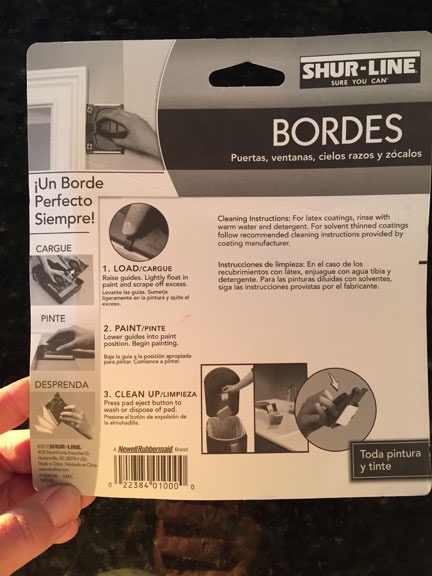An example.
I’ve always been interested in marketing. I think it goes back to a marketing course I took in college when I was a freshman. That’s when I began to realize how the choice of words in marketing copy could mislead potential buyers without actually lying. It’s also where I learned how packaging colors and styles could influence purchase decisions. I still think all that is fascinating.
The trick with packaging is providing all the information a potential buyer needs when in a store making a decision. I’ve been buying a lot of items — including small tools — as I continue working on my living space so I find myself relying, over and over, on what’s written on packages to determine which options go into my cart.
This area of Washington has a large hispanic population. It’s all because of the agricultural work done here. Let’s face it, Americans don’t want to get their hands dirty planting orchards, running irrigation lines, pruning trees, spraying pesticides, or culling, picking, or sorting fruit. Much of this work is done by migrant farm workers, especially in the busy picking season. But year-round there’s a core hispanic population. These folks live all around us, send their kids to our schools, and shop in our stores. And while most of them have some English-speaking skills — or even speak English fluently — their primary language is Spanish.
A lot of Americans get angry when they see a preponderance of signage and packaging in two languages. Oddly, they seem more angry when the second language is Spanish than if it’s French, but this post isn’t about the politics behind their anger. It’s about finding a compromise that provides the necessary information in both languages without putting the second language in your face.
And that’s where I think this product’s packaging succeeds.

The front side of the packaging is entirely in English.

The same information is provided in Spanish on the back side of the packaging.
It’s a tool I bought in Home Depot, a pad with a handle that’s designed to paint along edges. I bought it because I need to caulk and then re-paint the area around my windows. I don’t want to get paint on the window frame. Based on the information on the front of this package — which is entirely in English — I decided that this tool would do the job and I bought it.
It wasn’t until I opened it up today that I realized the back of the package pretty much duplicated the front — but in Spanish. The name of the tool in big, bold letters (Edger = Bordes); a list of suggested uses (Doors, windows, ceilings & baseboards = Puertas, ventanas, cielos razos y zócalos) the three steps to use (Load, Paint, Release = Cargue, Pinte, Despreda); and even the tag line (A PERFECT EDGE EVERY TIME = ¡Un Borde Perfecto Siempre!). Even the actual numbered instructions were in two languages, but with Spanish played down in a smaller font size. It was all there, in black and white instead of color, on the back instead of the front.
How could that possibly offend a flag-waving, anti-immigration American? Yet it provides the information both English-speaking and Spanish-speaking people need to know that the tool is, what it does, and how it works.
Anyway, I thought I’d take a moment to share my thoughts on this great solution to a politically charged issue. Well done, SHUR-LINE. ¡Olé!
